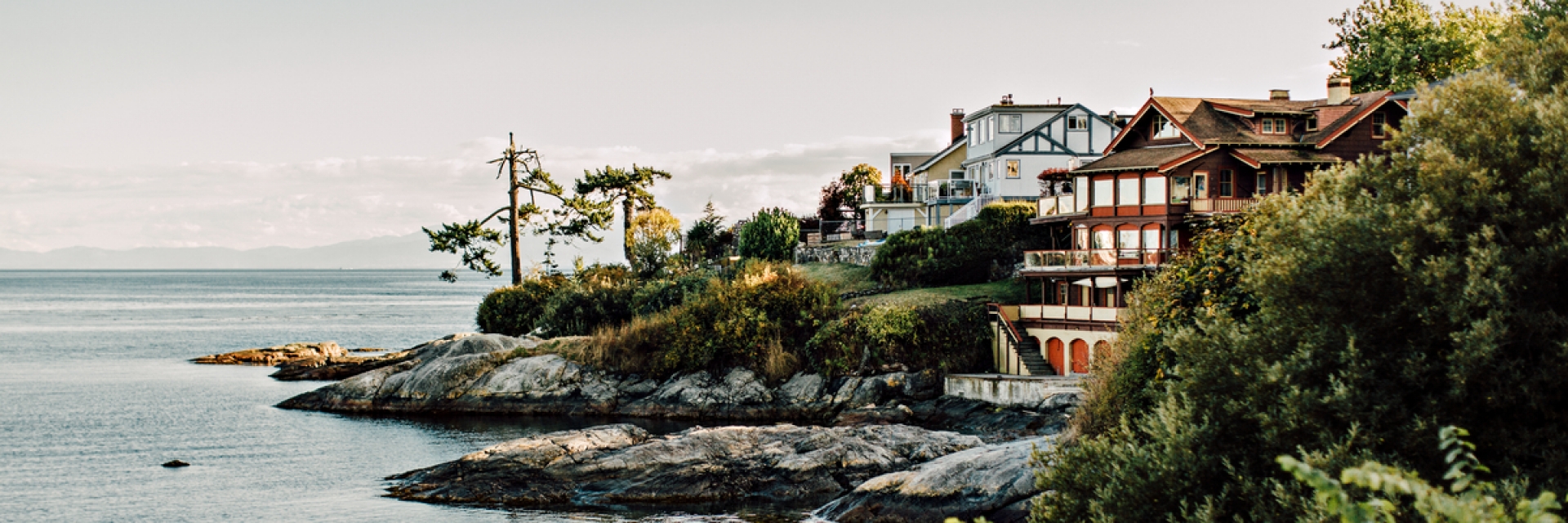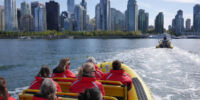Destination Development

Southern Vancouver Island
Program Goals
Destination Development throughout BC
Destination BC continues to work with communities across the six tourism regions on destination development strategies that pull together planning, policy, and capacity building efforts. Explore how each of the tourism regions are working together, and with various partners, to address impediments to tourism growth and strengthen relationships to capitalize on future tourism opportunities.
Regions
Planning Area Look Up Tool
Use the tool below to look up which planning area and tourism region your location falls within. The search result will also give you a link to the relevant Destination Development strategy.
Use the selectors below to see which planning area and tourism region your location falls within.
This tool captures all First Nations communities, Municipalities, and Regional District Electoral Areas across British Columbia.
Search Results
Links to the Destination Development strategies for the relevant planning area(s):
Columbia Valley
The planning area lies between the Purcell Mountain Range to the west and the Canadian Rockies to the east, and includes Columbia Lake, Lake Windermere, the Columbia Wetlands, and the Columbia River as well as Kootenay National Park. Geographically, the Valley extends some 102 kilometers from the community of Spillimacheen in the north to Canal Flats in the south and includes areas of the Regional District of East Kootenay.
West Kootenay & Revelstoke
The planning area stretches from Rossland, Trail, and Castlegar in the west to Revelstoke in the north and Creston in the east. The southern boundary is the US border. It includes the communities of Revelstoke, Nakusp, New Denver, Silverton, Slocan, Kaslo, Creston, Nelson, Salmo, Montrose, Fruitvale, Warfield, and all areas of the Regional District of Central Kootenay, and areas of the Regional District of Kootenay Boundary and parts of the Columbia Shuswap Regional District.
South Central Island
The planning area includes the entirety of three regional districts, Alberni-Clayoquot, Nanaimo and Cowichan, as well as the Southern Gulf Islands, which form part of the Capital Regional District.
North Island
The planning area encompasses 41,043 square kilometers of the Mount Waddington, Strathcona and Comox Valley Regional Districts. The main areas driving tourism are Strathcona Provincial Park, Comox, Campbell River, and Port Hardy.
Greater Victoria
The planning area encompasses all of the Capital Regional District (CRD) which includes the Saanich Peninsula in the east, to the Malahat in the north and on to Port Renfrew in the west and does not include the Gulf Islands.
Sunshine Coast
The planning area stretches from northwest of Langdale along 180km of land to north of Lund to Bliss Landing, Desolation Sound and waterways to the northern tip of Toba Inlet. It encompasses the jurisdictions of the Sunshine Coast Regional District, the Powell River Regional District and includes the following islands: Gambier, Keats, Nelson, Hardy, Thormanby, Texada, Lasqueti, Harwood, and Savary.
Fraser Valley
The planning area includes Langley and Pitt Meadows to the west, Hope and Manning Park to the east, the US border to the south, the tops of Golden Ears Provincial Park and Harrison Lake to the north, and all parts in between. It also includes the Fraser Valley Regional District and parts of Metro Vancouver.
Metro Vancouver
The planning area includes Langley and Maple Ridge to the east, Vancouver to the west, Delta and Surrey (and the US border) to the south, the North Shore and Lions Bay to the north, and all parts in between. Communities in Metro Vancouver coincide with those within the Metro Vancouver Regional District.
Highway 3 Corridor
This planning area (including Highway 3A, 3B, and 43) stretches east to west from Hope along 838 km of mountainous roads to the Alberta border. The Highway 3 Corridor has concluded their Destination Development Strategy and are working towards implementation.
Highway 1 Corridor
The planning area stretches from the Alberta border in the east to Kamloops/Savona in the west and includes Yoho National Park, Glacier National Park, and Revelstoke National Park. This portion of the Trans-Canada Highway extends some 550 kilometers and includes the Village of Field, the Town of Golden, the City of Revelstoke, the District of Sicamous, the City of Salmon Arm, the Village of Chase, the City of Kamloops, and Sun Peaks Mountain Resort Municipality.
Shuswap-North Okanagan
The planning area encompasses the Regional District of North Okanagan, areas of the Columbia Shuswap Regional District and, the Village of Chase in the Thompson Nicola Regional District. The key communities include Salmon Arm, Sicamous and Chase along Highway 1; Falkland on Highway 97, and Enderby, Armstrong, Vernon, Coldstream and Lumby in the North Okanagan.
Okanagan Valley
The planning area encompasses the Regional District of Central Okanagan, Similkameen Regional District, and the Regional District of Kootenay Boundary. Municipalities include Lake Country, Kelowna, West Kelowna, Peachland, Summerland, Penticton, Oliver, Keremeos, and Osoyoos.
North Thompson & Nicola Valleys
The planning area encompasses a portion of the Regional District of Fraser-Fort George and from Porcupine Meadows Park southwest to Savona, and the remainder south of the area, just south of Kamloops, along 5A until Sun Peaks in the east, with communities along Highway 1 of the Thompson-Nicola Regional District (TNRD). Municipalities include McBride, Valemount, Clearwater, Barriere, Sun Peaks, Kamloops, Logan Lake and Merritt.
Northwestern BC
The planning area spans from Tatshenshini-Alsek Park at the Alaska-Yukon-BC border south to the start of Highway 37 and west from Prince Rupert to the area east of Valemount.
Northeastern BC
The planning area spans from the northern tip of the BC portion of the Alaska Highway (Highway 97) to the Yukon-BC border, south to Prince George and from the western edge of the Muskwa Kechika Management area and east to the Alberta border.
Haida Gwaii
The planning area is located approximately 130 km off the BC coast and 640 km north of Vancouver and is accessible by air and sea. The closest mainland transportation access is from Prince Rupert via BC Ferries. Haida Gwaii encompasses over 200 islands, totaling 3750 square miles, or 1,000,000 hectares with two developed islands.
No strategy has been developed yet. Please get in touch with Northern BC Tourism staff for further information.
Sea-to-Sky Corridor
The planning area encompasses all of the North Shore of Metro Vancouver Regional District and the Squamish-Lillooet Regional District. This estimated 260-kilometre-long area includes North Vancouver, and Burrard Inlet through West Vancouver to Horseshoe Bay, and then north where the route meets the Howe Sound coastline to Squamish. There the route continues inland through the Coast Mountain Range. The Sea-to-Sky Corridor includes all communities and remote areas in between North Vancouver and Lillooet, including Bowen Island and the Bridge River Valley, north of Pemberton.
Interlakes
The planning area, which encompasses the main corridor of Highway 24, and its junction with Highways 97 and 5, stretches across the Bonaparte Plateau to the North Thompson Valley, including Wells Gray Provincial Park and the communities of Barriere and Clearwater. The western side of the area is bounded by a portion of Highway 97 to include the area between 70 Mile House and 100 Mile House. To the south the area includes Bonaparte Lake. To the north, the boundary is Canim-Hendrix Rd, Canim Lake, Crooked Lake, Azure Lake and the northern boundary of Wells Gray Provincial Park.
Gold Rush Trail
The planning area is a 750km corridor from New Westminster to Stone Creek and Barkerville, following the Fraser Canyon and Fraser River that follows traditional Indigenous trading routes utilized during the fur trade and expanded through the gold rushes of 1858-1862.
Chilcotin Central Coast
The planning area which encompasses the area west of the Fraser River stretching across the Chilcotin Plateau to the central coast, north to include Hartley Bay, Entiako, Finger-Tatuk and Fraser River Provincial Park, and south to include Bute Inlet, the Homathko Icefield and Big Creek Provincial Park.
destination development case studies
The following collection of 12 case studies showcases the social, cultural, and economic advantages of tourism through destination development initiatives, highlighting their positive impact for both visitors and residents. These compelling stories engage communities and local partners interested in destination development and its many benefits for communities across BC. Featuring two projects from each of the six tourism regions in BC, the series illustrates community destination development through collaborative regional and local partnerships. These stories inspire and offer valuable insights and learnings that can be adapted to support future tourism endeavours in other areas or communities. This case study series was created by Destination BC through collaboration with the Ministry of Tourism, Arts, Culture and Sport and the six Regional Destination Management Organizations in BC.
Get in Touch
To find out more about the Destination Development program or to determine the best way for you to participate, contact us at DestinationDevelopment@DestinationBC.ca
Subscribe to Directions, Destination BC’s e-newsletter, for the latest news and program updates.
Receive updates, research and news you can use.






